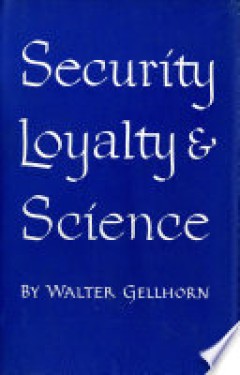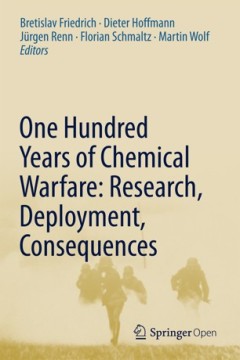Filter by

Security, Loyalty, and Science
Both sides of a sensitive problem are assessed by Professor Gellhorn in this penetrating analysis of national security and its effect upon scientific progress. The costs and advantages of secrecy in certain areas of science and the conflict between national safety and individual rights in the administration of our federal loyalty program are presented; all the arguments are objectively weighed.…
- Edition
- 32
- ISBN/ISSN
- 9781501740688
- Collation
- v, 312 p
- Series Title
- Cornell Studies in Civil Liberties
- Call Number
- -

Empire’s violent end : comparing Dutch, British, and French wars of decolo…
In Empire's Violent End, Thijs Brocades Zaalberg and Bart Luttikhuis, along with expert contributors, present comparative research focused specifically on excessive violence in Indonesia, Algeria, Vietnam, Malaysia, Kenya, and other areas during the wars of decolonization. In the last two decades, there have been heated public and scholarly debates in France, the United Kingdom, and the Netherl…
- Edition
- 1
- ISBN/ISSN
- 9781501764165
- Collation
- 246p
- Series Title
- -
- Call Number
- 325.309405 EMP b

Forts and Fortification in Wallacea : Archaeological and Ethnohistoric Invest…
This volume presents ground-breaking research on fortified sites in three parts of Wallacea by a highly regarded group of scholars from Australia, Europe, Southeast Asia and the United States. In addition to surveying and dating defensive sites in often remote and difficult terrain, the chapters provide an important and scholarly set of archaeological and ethnohistoric studies that investigate …
- Edition
- -
- ISBN/ISSN
- 9781760463892
- Collation
- xv, 306p . : ill
- Series Title
- -
- Call Number
- 959.801 FOR f

Bronze Age Maritime and Warrior Dynamics in Island East Asia
Recent interdisciplinary studies, combining scientific techniques such as ancient DNA analysis with humanistic re-evaluations of the transcultural value of bronze, have presented archaeologists with a fresh view of the Bronze Age in Europe. The new research emphasises long-distance connectivities and political decentralisation. 'Bronzisation' is discussed as a type of proto-globalisation. In th…
- Edition
- -
- ISBN/ISSN
- 9781108982955
- Collation
- 82 p ; ill
- Series Title
- -
- Call Number
- 959 BRO M

Forts and fortification in Wallacea: archaelogical and ethnohistoric investig…
This volume presents ground-breaking research on fortified sites in three parts of Wallacea by a highly regarded group of scholars from Australia, Europe, Southeast Asia and the United States. In addition to surveying and dating defensive sites in often remote and difficult terrain, the chapters provide an important and scholarly set of archaeological and ethnohistoric studies that investigate …
- Edition
- -
- ISBN/ISSN
- 9781760463892
- Collation
- xvi, 290p.: ill,oc
- Series Title
- -
- Call Number
- 959.8507 FOR f

One hundred years of chemical warfare: research, deployment, consequences
On April 22, 1915, the German military released 150 tons of chlorine gas at Ypres, Belgium. Carried by a long-awaited wind, the chlorine cloud passed within a few minutes through the British and French trenches, leaving behind at least 1,000 dead and 4,000 injured. This chemical attack, which amounted to the first use of a weapon of mass destruction, marks a turning point in world history. The …
- Edition
- -
- ISBN/ISSN
- 9783319516646
- Collation
- xi, 408p. : ill.
- Series Title
- -
- Call Number
- 355 ONE o
 Computer Science, Information & General Works
Computer Science, Information & General Works  Philosophy & Psychology
Philosophy & Psychology  Religion
Religion  Social Sciences
Social Sciences  Language
Language  Pure Science
Pure Science  Applied Sciences
Applied Sciences  Art & Recreation
Art & Recreation  Literature
Literature  History & Geography
History & Geography